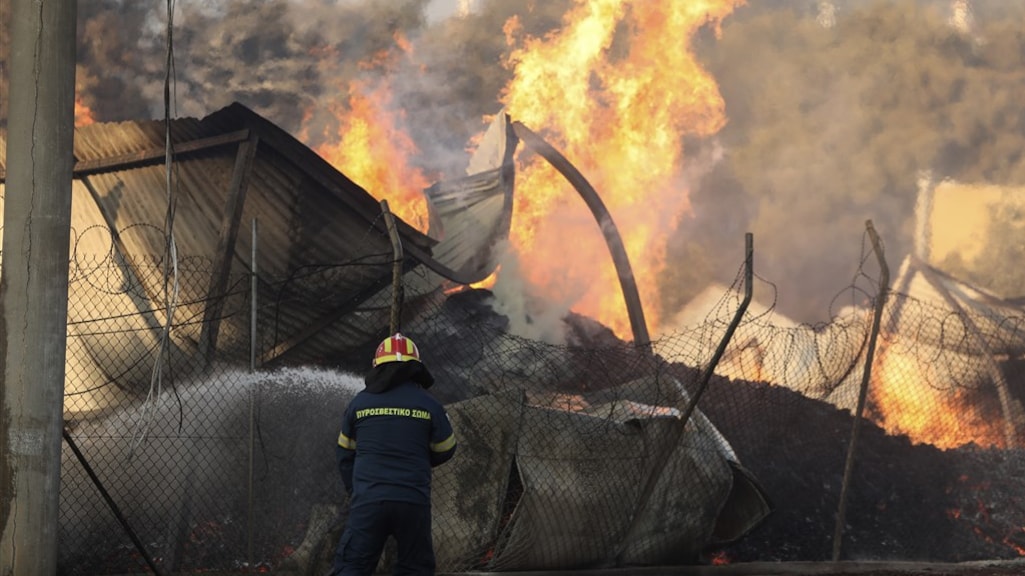Climate-resistant varieties wanted: stress test for strawberries and trees

Which tree species are best to plant in the city in future heat? Will a punnet of strawberries soon become unaffordable due to the impending drought? Scientists at Wageningen University & Research (WUR) are currently conducting high-tech research into this.
A new research facility can simulate the climate of the future. Different types of trees and strawberries are subjected to a 'climate stress test'. Scientists and companies can use the facility to conduct their research.
"Climate change is happening so fast for trees that a large proportion of tree species in the Netherlands are in danger of disappearing between now and fifty years," Marc Ravesloot, urban green researcher at WUR, told RTL Z.
In this video he tells more about it:
Until now, city trees have been judged based on experience, says Ravesloot. "We look at which ones do and which ones don't continue to do well under certain circumstances. But from now on we will get hard data, which will make species more comparable."
With many sensors and cameras, the growth process is continuously recorded under different conditions. Based on this, the most climate-resistant tree species can be selected. These are the trees that can best withstand extreme drought, heat and also salinization.
This is important because planting trees is seen as an effective method to prevent excessive heat stress in cities. But it is necessary to know which trees will continue to do well in the future, when in thirty or fifty years the temperature in cities has risen much further.
Despite this week's rain, the Netherlands has been struggling with severe drought for months this year. The current rain will not make up for the precipitation deficit.
In the future, evaporation in our country will increase, both in spring and summer. This means that the chance of drought in both seasons will also increase.
In the new research location NPEC, a collaboration between WUR and Utrecht University, in addition to the project with urban trees, research is now also being conducted into strawberries. This is being done in collaboration with breeding company Flevo Berry.
The strawberry plants are on a conveyor belt. Different varieties are exposed to specific conditions such as drought, says Marina Hulscher Horst of Flevo Berry. With sensors and cameras, millions of data from five hundred plants are eventually collected.
This data is analyzed using artificial intelligence. "Within a very short time, we can get an idea of how different varieties will perform under drier conditions," says Hulscher.
The method goes further than the so-called 'improvement'. Plants are selected with the desired properties. By growing and selectively crossing with the best specimens, an increasingly better, 'improved' plant is eventually created.
"But breeding takes an average of 8 to 10 years," says Hulscher. "Whereas with this new method with sensors you can get a complete picture of a variety much sooner, and how that variety performs under different conditions."
In the new research location, it is possible to 'play' with all kinds of weather conditions. Dry, wet, hot, cold, and even a desert climate can be simulated. Hulscher: "We can then investigate how green the plant is, how high or low the leaves are, what the color of the fruit is, and how big the fruit is."
Extreme weatherFinding strawberry varieties that can withstand extreme weather conditions is a major challenge. In recent years, there have been periods of drought and heat, while last year it was extremely wet and cold for a long time.
“To provide certainty in strawberry cultivation, you want to have varieties that show little to no stress under all circumstances,” says Hulscher. “That translates into a good harvest.”
Whatever the future climate will be, it will be largely influenced by the amount of greenhouse gases. "Since 1900, global emissions have risen almost continuously," says Ravesloot, who says he is shocked by the impact that climate change is having on trees.
Within his urban tree research, officially called 'CSI Trees: climate adaptive trees for the future', the choice was made to look at the average KNMI emission scenario as a basis. Ravesloot: "On top of that, periods without precipitation, long-term heat and salinization are simulated."
RTL Nieuws










